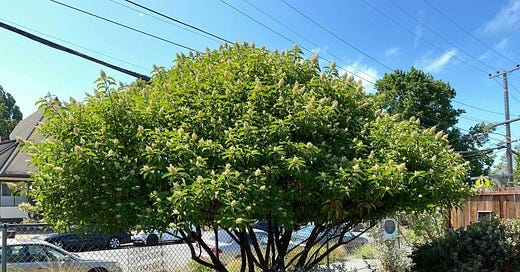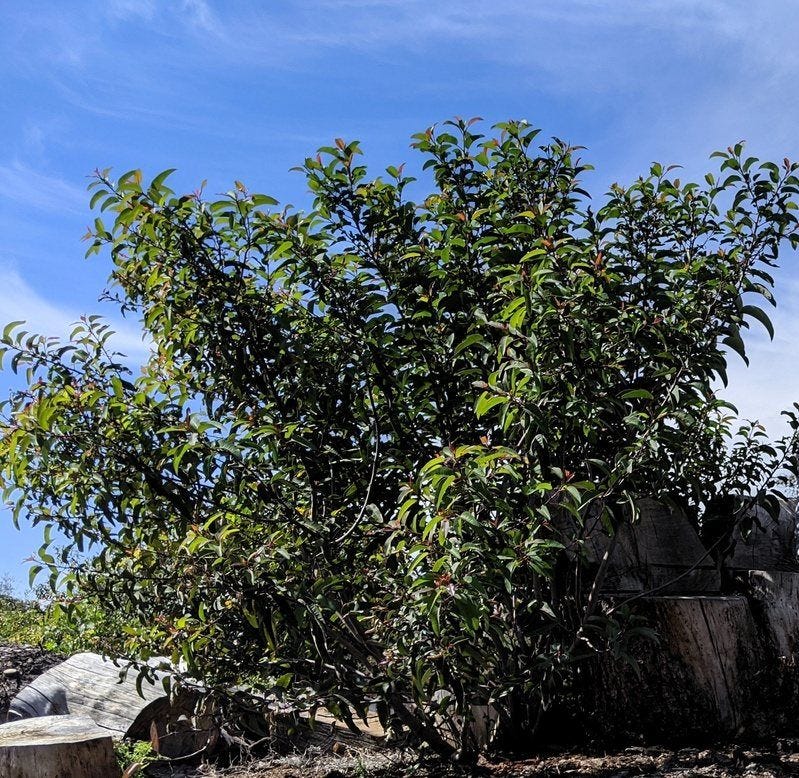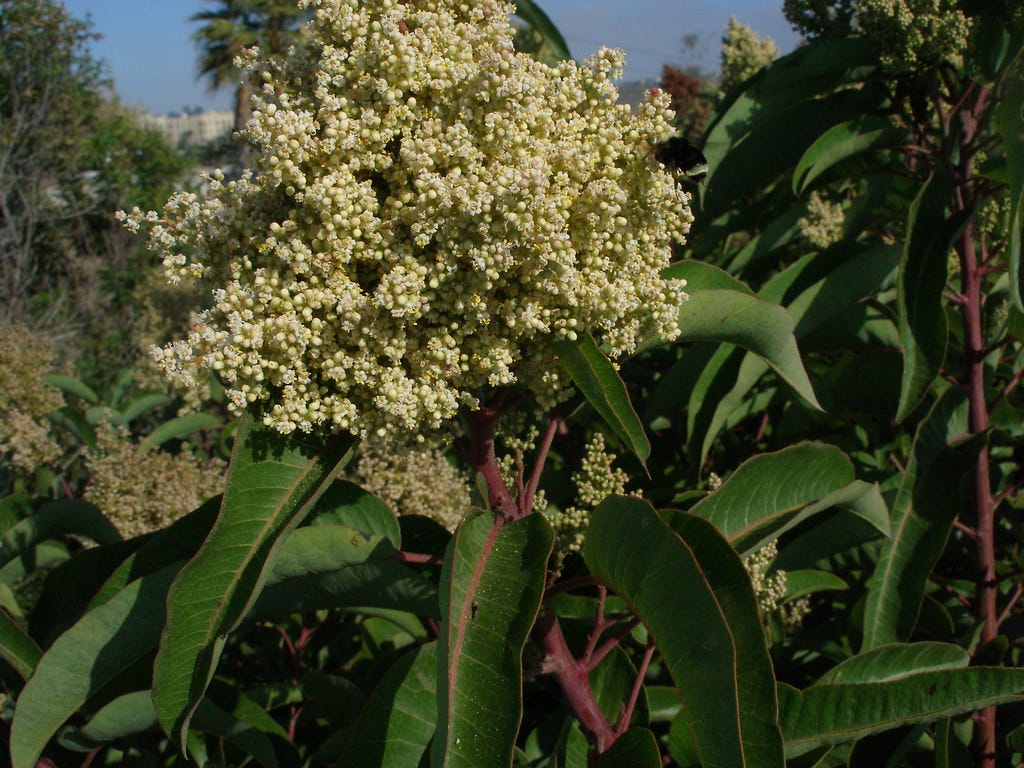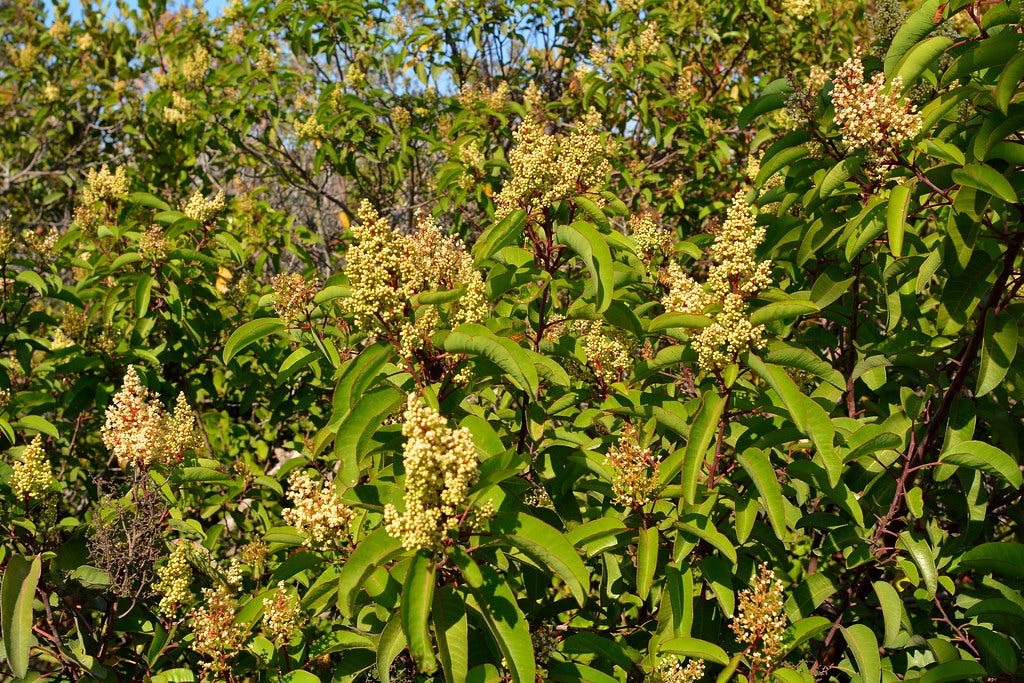As I write this post, it is mid-November in California and the first storm of the rainy season is about to hit the West Coast, heralding the start of planting season for California Native Plant Gardeners. This makes it a great time to write about one of my favorite native shrubs of California: Laurel Sumac (Malosma laurina).
Naming
Laurel Sumac is the most common name of Malosma laurina, but it is also known by these other names:
Atuto’nar - the name given to it by the Tongva tribe of Native Americans who reside in the area (Southern California) where they are most found growing naturally. The Kumeyaay tribe of Baja California call it Ektii.
Lentisco - the name that Spanish settlers of California gave it. Presumably, this was due to mistaking it for Pistacia lentiscus, which is a native plant of Spain.
The Taco Tree - this is a whimsical nickname for the shrub, due to the shape of its leaves that resemble a taco shell.
When flattened, the leaves resemble Laurel leaves, hence the better-known common name of Laurel Sumac. It was originally classified as Rhus laurina, placing it in the same genus as Sumac plants. It is now the only species in the Malosma genus.
Description
Laurel Sumac is a large shrub that can grow to the size of a small tree up to 20ft (6m) tall. This shrub is very tolerant of pruning and can be trimmed up to create an attractive patio tree. As an adaption to wildfire, Laurel Sumac can re-sprout when cut down to a stump, so coppicing is an effective method for rejuvenating older plants.
One of my favorite characteristics of this shrub is that it is very drought tolerant but does not have a dormancy period like other California native plants. It stays evergreen year-round and will continually put out new growth.
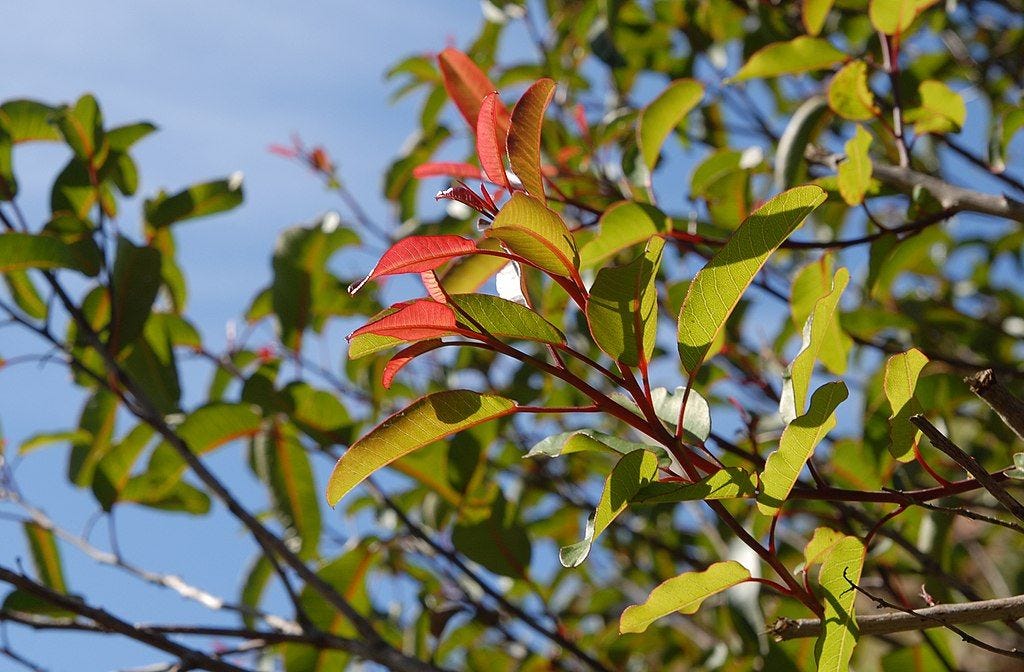
New stems and leaves will have a red tone, and creamy flowers cover the plant in Spring. While the flowers themselves are very small, they grow in large clusters at the ends of branches. The flowers give off an herbal smell that is reminiscent of apples. Even outside of the flowering season, the shrub has a pleasant but subtle aroma. Laurel Sumac is one of the most common plants found in Chaparral and alongside Sages and Sagebrush, they are one of the main contributors to the distinct aroma experienced when exploring Chapparal areas.
Use in the Garden
Laurel Sumac is a very useful plant as a large hedge, that can also be pruned to a small tree, so it is a versatile shrub for use in the background of larger landscapes. When left unpruned, it can sprawl to a 20ft (3m) wide bush. This spread can slow down rainfall and in combination with its deep roots can make this a very good plant for stabilizing hillsides that are prone to erosion.
It can experience some dieback that affects a small part of the plant, but this can be easily trimmed off and the plant will quickly recover to produce new growth. It is drought tolerant and will need no supplemental water after it is established, but it doesn't really suffer if given summer water.
Laurel Sumac is an excellent choice for a wildlife garden. Birds will appreciate the shelter in its canopy and songbirds find the flower seeds very tasty.
The one failing of this shrub is that they are not frost-tolerant. Citrus and Avocado growers in California traditionally used Laurel Sumac as markers for where their orchards would be suitable.
Traditional Use
Tongva people have used the leaves of Laurel Sumac to create a tea that relieves coughs and congestion. Chumash and Kumeyaay people have made flour by grinding the dried flowers and fruits of the plant. The Tongva have also used this plant as part of childbirth bathing rituals.
There is no known modern use of this plant as an herbal medicine and while it is not known to be poisonous, it is not considered to be an edible plant.

